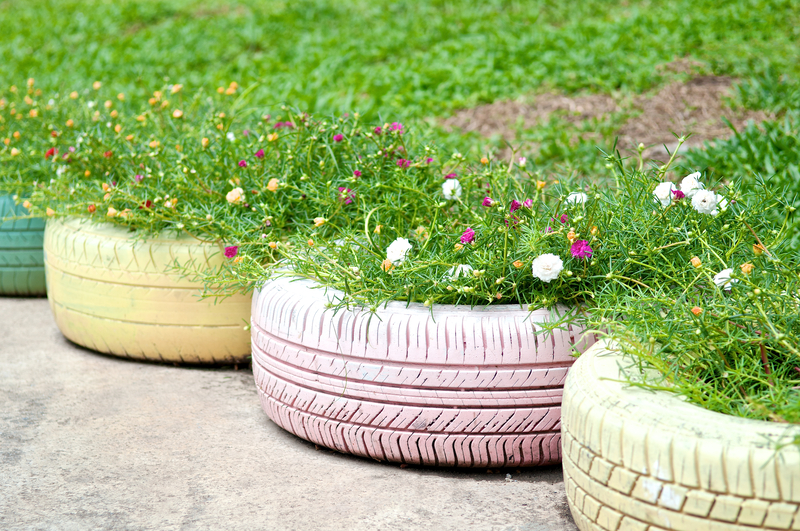Unraveling the Mystery: How to Stop Microplastic Pollution
In the past few decades, the world has witnessed a growing menace silently infiltrating our environment--microplastic pollution. These tiny plastic fragments, often invisible to the naked eye, have permeated our oceans, rivers, soil, atmosphere, and even the very food we eat and water we drink. While the problem may seem daunting, understanding the causes, impacts, and solutions is the first step toward reducing microplastic pollution and moving towards a healthier planet.
What Are Microplastics?
Microplastics are small plastic particles less than 5mm in diameter. They stem from the breakdown of larger plastic debris, or are intentionally manufactured, as in the case of microbeads found in cosmetics and cleaning products. Microplastics are ubiquitous--they can be found in the deepest marine trenches, Arctic ice, and even in human blood. Despite their ubiquity, the full extent of their effects on human and environmental health is still being unraveled.
Sources of Microplastic Contamination
- Larger plastic waste breaking down in the environment
- Microbeads from personal care products
- Synthetic fibers shed from clothing during laundering
- Tire wear and tear releasing tiny particles
- Industrial abrasives used in sandblasting
The pervasive presence of microplastics in every corner of the globe has alarmed scientists and environmentalists alike. Tackling their spread is essential, but stopping microplastic pollution requires coordinated action and informed choices on both individual and societal levels.

Why Is It Important to Stop Microplastic Pollution?
Microplastic pollution poses significant threats:
- Ecosystem Disruption: Microplastics can be ingested by marine life, entering the food chain and causing harm to creatures ranging from plankton to whales.
- Human Health Risks: These particles have been detected in tap water, bottled water, and food products, raising concerns about potential impacts on human health.
- Economic Costs: The presence of microplastics can damage fisheries, tourism, and water treatment infrastructure, resulting in multi-billion dollar losses worldwide.
Comprehensive Solutions: How to Stop Microplastic Pollution
Unraveling the mystery behind stopping microplastic pollution involves innovative thinking, robust legislative frameworks, and conscious consumer habits. Here's a deep dive into effective methods to combat this pressing environmental crisis.
1. Legislation and Ban on Single-Use Plastics
A significant amount of microplastics arise from the fragmentation of larger plastic items. By implementing and enforcing a ban on single-use plastics, governments can dramatically decrease the volume of plastics that end up in our ecosystems.
- Plastic bag levies and outright bans in several countries have led to marked reductions in usage and waste.
- Restriction of certain products--such as microbeads in personal care items--have been successfully implemented in the US, UK, and several other countries.
Policymakers should aim to:
- Implement extended producer responsibility (EPR) schemes demanding manufacturers to manage the lifecycle of their products.
- Set targets for plastic waste reduction, collection, and recycling.
2. Innovations in Wastewater Treatment
One of the main pathways through which microplastics enter our waterways is via household greywater. Upgrading wastewater treatment plants to include advanced filtration systems--such as membrane bioreactors and rapid sand filters--can remove a significant proportion of microplastic particles before the water is discharged.
- Research shows that advanced treatment can capture up to 99% of microplastics.
- Public investment in infrastructure improvement is essential to scale these technologies globally.
3. Tackling Microfiber Pollution from Textiles
Synthetic clothes--such as polyester, nylon, and acrylic--shed microfibers whenever they are washed. These microplastics often escape filtration and contaminate waterways.
To minimize the impact:
- Install microfiber filters in washing machines: Legislation is being considered and implemented in several countries (e.g., France) requiring this technology in new appliances.
- Choose natural fibers: Favoring cotton, wool, and other biodegradable materials greatly reduces microfiber emissions.
- Laundry bags and balls: Tools like Guppyfriend bags and Cora Balls help capture fibers before they get into wastewater.
- Wash less often and use cold cycles: Reduces fiber shedding and conserves energy!
4. Limiting Microplastic Pollution from Vehicle Tires
Vehicle tires are among the largest sources of road-derived microplastics. As they wear down, they release tiny particles that wash into waterways during rainfall events.
- Switching to tires with longer lifespans and those made from more eco-friendly materials.
- Encouraging use of public transportation, cycling, and walking to reduce the wear of tires.
- Using appropriate stormwater management infrastructure, such as sediment traps, to capture runoff before it reaches rivers and oceans.
5. Reducing Plastic Use at the Source
The most effective strategy is to reduce our total plastic consumption. You can begin today:
- Opt for reusable bags, bottles, and cutlery instead of disposable alternatives.
- Support companies that use biodegradable or compostable packaging.
- Avoid products with unnecessary plastic packaging, and encourage your local stores to stock more sustainable alternatives.
6. Boosting Public Awareness and Education
Stopping microplastic pollution requires collective action. Raising awareness in schools, workplaces, and communities is crucial:
- Integrate microplastic education modules into science curricula.
- Host community cleanups to connect people with the reality of plastic pollution.
- Leverage social media to spread information on the impact of microplastics and the importance of reducing plastic use.
7. Funding and Supporting Science and Innovation
The battle against microplastics is underpinned by ongoing research and technological advancements:
- Support citizen science projects to monitor local water bodies for microplastic presence.
- Invest in innovation--from new biodegradable materials to alternative filtration methods and environmental monitoring technology.
- Collaborate globally to share best practices and technologies across borders.
Microplastics in the Food Chain: What's at Stake?
Microplastics are not restricted to the environment alone--they make their way up the food chain, often ending up on our plates. Studies have found microplastics in seafood, table salt, bottled beverages, and even the air we breathe.
- Seafood risk: Shellfish and small fish readily ingest microplastics, which can accumulate up the food web--ultimately reaching humans.
- Health uncertainties: While research continues, scientists have expressed concerns about the chemicals associated with microplastics, such as BPA and phthalates, known to be endocrine disruptors.
- Indirect impacts: Microplastics can act as vectors, carrying pathogens and toxic chemicals into organisms.
Understanding and addressing microplastics in our food chain is imperative for long-term public health.
International Approaches to Solving the Microplastic Crisis
Microplastic pollution is a global problem requiring coordinated, international responses. Several landmark initiatives propose a pathway forward:
- United Nations Environment Assembly (UNEA): In 2022, the UNEA agreed to develop a legally binding global treaty to end plastic pollution, including microplastics.
- European Union's Plastics Strategy: The EU has set out ambitious targets to reduce waste, boost recycling, and eliminate various single-use plastics.
- Global Partnership on Marine Litter (GPML): Established by the United Nations Environment Programme to foster collaboration and innovation in tackling marine microplastic pollution.
Everyday Actions: How Individuals Can Prevent Microplastic Pollution
Wondering how you can personally contribute to microplastic prevention?
- Say "no" to single-use plastics whenever possible.
- Care for your clothes--wash less, air out, and select natural fabrics.
- Participate in local clean-up days to prevent plastics from entering waterways.
- Educate friends and family about the impacts of microplastics.
- Advocate for improved policies at the neighborhood, city, and national levels.
- Support brands and businesses that are leaders in plastic reduction efforts.

The Role of Technology in Microplastic Reduction
Emerging technologies are accelerating progress in the fight against microplastics:
- Smart Filters: Home and industrial filtration systems are being designed to capture microplastics from wastewater.
- Biodegradable Materials: Innovations in bioplastics and biodegradable polymers offer alternatives that break down harmlessly in the environment.
- Ocean Cleanup Devices: Large-scale cleanup operations now use floating barriers and skimmers to collect plastics, including microplastics, from our seas.
- Real-time Environmental Sensors: Advanced monitoring helps trace sources of pollution and evaluate the effectiveness of interventions.
Conclusion: From Mystery to Mastery
While the mystery of microplastic pollution has only begun to be unraveled, every discovery brings us closer to effective solutions. Stopping microplastic pollution is not the responsibility of one sector alone; it demands a synergy between individuals, industries, governments, and innovators.
By understanding the sources and impacts of microplastics, supporting responsible policies, innovating filtration and cleanup technologies, and making informed daily choices, we can collectively reverse the rising tide of microplastic pollution. The power to shape a cleaner, safer, and more resilient future is in our hands. Let us act decisively and sustain the planet for generations to come.
Together, we can unravel the mystery--and stop microplastic pollution.